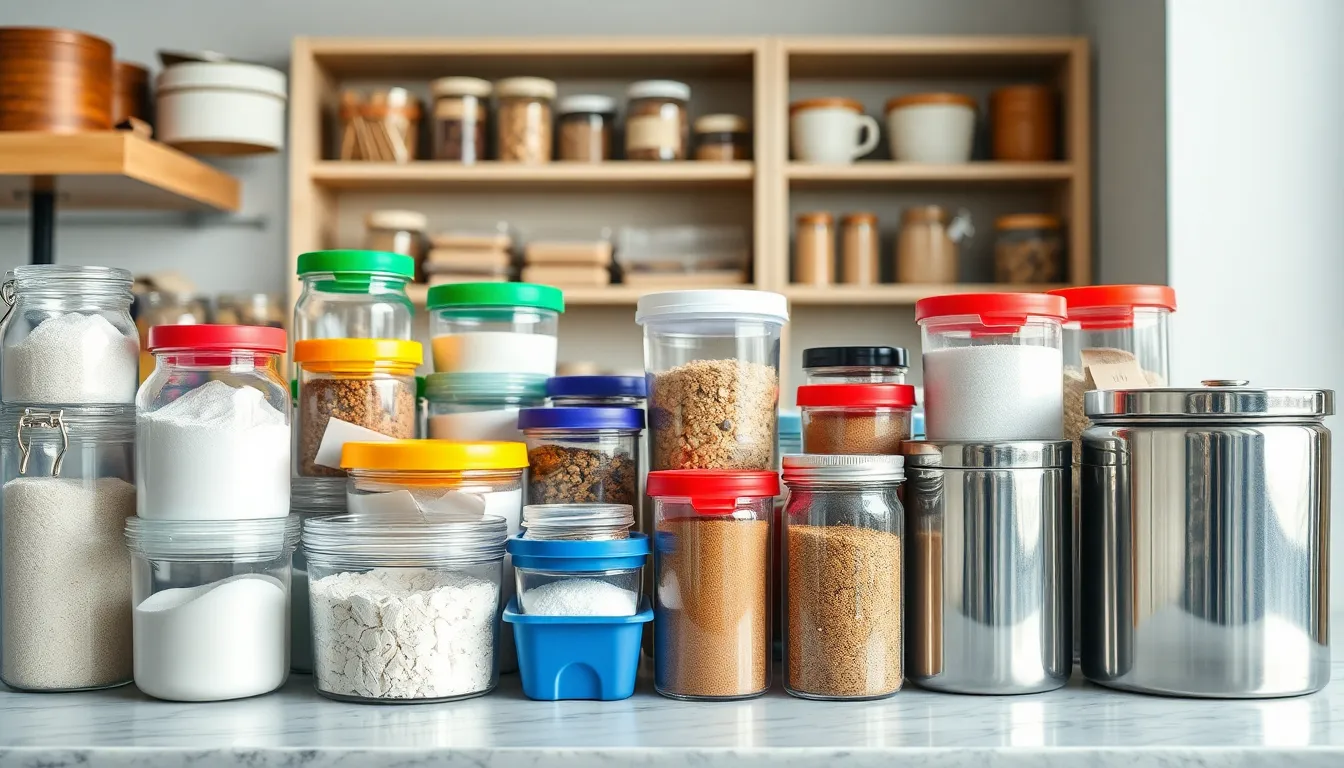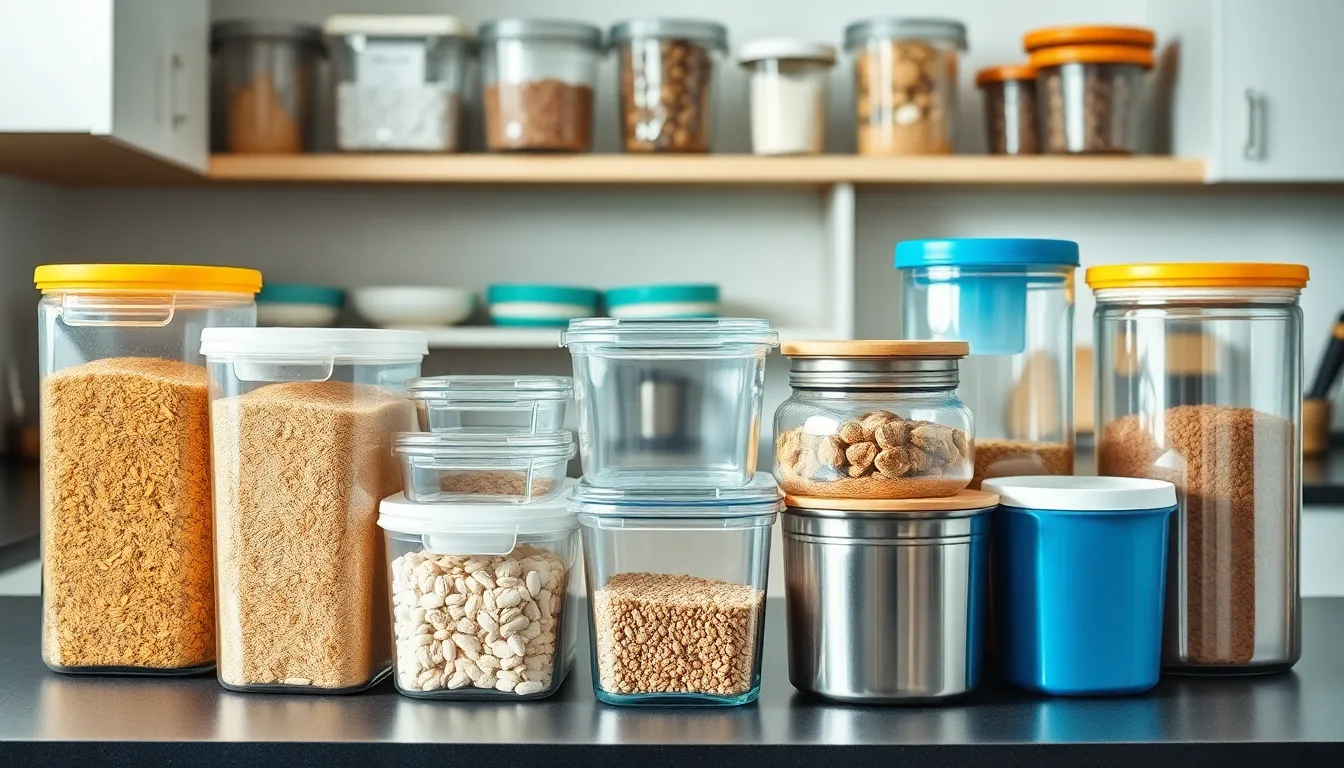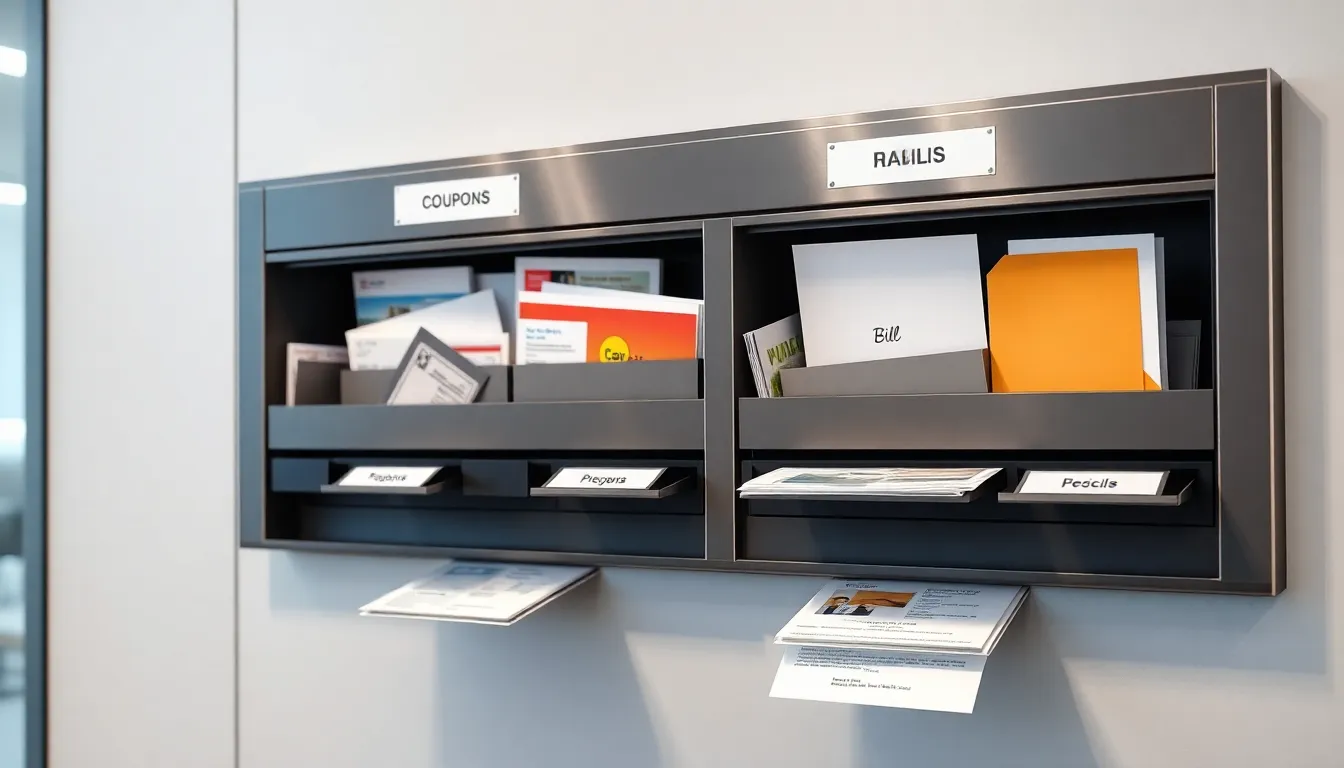In a world overflowing with snacks and pantry staples, the quest for the perfect dry goods storage container can feel like searching for a needle in a haystack. Who knew that keeping flour fresh and pasta untangled could be such an epic adventure? Fear not, because the right containers can turn your chaotic kitchen into a well-organized haven, making you feel like a culinary superhero.
Imagine a pantry where everything is neatly labeled and easily accessible. No more wrestling with bags that refuse to stay closed or finding mysterious crumbs at the bottom of your shelves. With the right dry goods storage solutions, you’ll not only save time but also keep your ingredients fresher for longer. Let’s dive into the world of dry goods storage containers and discover how they can transform your kitchen from a disaster zone into a culinary masterpiece.
Table of Contents
ToggleOverview of Dry Goods Storage Containers
Dry goods storage containers come in various shapes, sizes, and materials. Choosing the right container enhances kitchen organization and preserves ingredient freshness. Airtight containers prevent moisture and pests, critical for maintaining quality. Transparent options allow for easy visibility of contents, aiding in quick ingredient identification.
Many people prefer plastic containers because of their lightweight nature. Glass containers offer a stylish look while being durable and eco-friendly. Metal options provide a unique aesthetic and excellent durability for long-term storage. Designed with user-friendly features, many containers include stackable designs, maximizing space efficiency.
Labels play a significant role in effective organization. Identifying ingredients helps avoid confusion and simplifies meal preparation. Containers may also include measurement markings, ensuring accurate ingredient usage. Resealable bags serve as another storage solution, providing flexibility for smaller quantities.
Temperature control matters as well. Keeping dry goods in cool, dark places prevents spoilage and maintains flavor. Rotating supplies based on usage ensures that older items are utilized first, reducing waste. Selecting easy-to-clean materials simplifies maintenance, ensuring a hygienic storage environment.
Numerous brands offer high-quality dry goods storage containers. Researching customer reviews helps identify reliable options. Finding containers with a warranty may indicate durability and manufacturer confidence. With the correct storage solutions, transforming a cluttered pantry into an organized space becomes achievable.
Types of Dry Goods Storage Containers
Selecting the right type of dry goods storage container is crucial for maintaining freshness and organization in the kitchen. Various options exist, each offering unique benefits.
Plastic Containers
Plastic containers are lightweight and widely available. Many are designed with airtight seals to prevent moisture and pests from ruining ingredients. Durability characterizes these containers, often providing years of reliable use. Their transparent designs enhance visibility, allowing quick identification of contents. BPA-free options ensure safety for food storage, catering to health-conscious consumers. Easy stacking features maximize pantry space, promoting an organized environment.
Glass Containers
Glass containers provide an elegant and durable storage solution. They resist stains and odors, making them ideal for long-term use. Airtight lids help maintain freshness by keeping air and moisture at bay. Many glass containers are microwave and dishwasher safe, offering convenience in preparation and cleanup. The ability to see ingredients at a glance promotes efficient usage. Options with measurement markings streamline portion control, minimizing food waste.
Metal Containers
Metal containers are robust and often feature airtight seals. They effectively protect dry goods from light and moisture, ensuring longer shelf life. Stainless steel options are particularly popular due to their resistance to rust and corrosion. Some metal containers come with easy-open lids for quick access to contents. Designed for stacking, these containers save valuable space in the pantry. Stylish metallic finishes add a modern touch, enhancing kitchen aesthetics.
Features to Consider
Evaluating storage containers for dry goods requires attention to essential features that enhance usability and effectiveness.
Airtight Seals
Airtight seals play a crucial role in moisture and pest prevention. They keep ingredients fresh and extend shelf life, ensuring that even the most sensitive items, such as flour and sugar, remain unspoiled. Containers with silicone gaskets or snap-lock lids provide added security by minimizing air exposure. Many efficient designs offer user-friendly features for easy handling, allowing quick access during meal preparation or baking. Finding containers that seal properly is vital for maintaining the integrity of stored goods.
Size and Capacity
Size and capacity significantly impact kitchen organization. Choosing the right dimensions ensures efficient use of pantry space and allows for the storage of various ingredient quantities. Small containers suit spices and herbs, while larger options are ideal for bulk items like grains and pasta. Some containers feature stackable designs, maximizing vertical space in cabinets. When selecting, consider typical ingredient amounts and pantry layouts for optimal arrangement.
Design and Material
Design and material contribute to both functionality and aesthetic appeal. Plastic containers often provide lightweight options, making them easy to move, but glass containers offer visual clarity and durability. Metal containers, known for resilience, protect contents from light and moisture effectively. Selecting materials that suit individual preferences is essential for balancing practicality with kitchen decor. Styles range from sleek and modern to rustic, allowing seamless integration into pantry themes.
Benefits of Using Dry Goods Storage Containers
Using dry goods storage containers offers numerous advantages, especially in maintaining a tidy kitchen. These containers enhance organization and ensure ingredients remain fresh and accessible.
Organization
Effective storage solutions contribute significantly to an organized pantry. Containers come in various sizes, allowing flexibility for different items. Small containers suit spices and small grains, while larger ones accommodate bulk purchases like pasta and rice. Clear designs facilitate quick ingredient identification. Labels provide additional clarity, streamlining the cooking process. Utilizing stackable containers maximizes vertical space, creating a visually appealing and functional pantry.
Freshness Preservation
Preserving the freshness of dry goods is essential for maintaining flavor and quality. Airtight containers prevent exposure to moisture, ensuring ingredients like flour, sugar, and cereals stay crisp. Storing items in proper containers deters pests such as insects and rodents as well. Glass options resist stains and odors effectively, while plastic alternatives often feature airtight seals that enhance longevity. By preventing air and moisture from entering, the right storage containers extend shelf life and enhance the overall cooking experience.
Conclusion
Choosing the right dry goods storage containers can significantly enhance kitchen organization and efficiency. By investing in quality options that suit individual needs, anyone can create a clutter-free pantry that’s both functional and visually appealing. Airtight seals, appropriate sizes, and stylish designs contribute to a seamless cooking experience.
With a variety of materials available, from plastic to glass and metal, it’s essential to select containers that balance practicality with aesthetics. Emphasizing features like labeling and stackability ensures easy access to ingredients while maintaining freshness. Ultimately, the right storage solutions not only preserve food quality but also elevate the overall culinary journey.








